AIR POLLUTION STATISTICS
Air pollution is currently one of the world's most serious environmental issues. Constant exposure to it puts the world's population at extremely high risk of health problems and early mortality. Individuals worldwide have been victims of this silent murderer for years, which now kills more people in one year than COVID-19 did in two.
With that in mind, Home Air Authority has compiled a collection of instructive facts and statistics that will clarify the causes of air pollution and much more.
Topics Covered

Global Air Pollution Statistics

What the future holds
Key Findings
- Air pollution causes a yearly death rate of 7 million.
- Outdoor air pollution contributes to 4.2 million deaths per year.
- 3.2 million people die each year from indoor air pollution.
- Approximately 1 in 4 Americans live in areas with pollution levels over National Ambient Air Quality Standards (NAAQS).
- Air pollution negatively affects human health and economic growth.
- The market costs of outdoor air pollution will increase from 0.3% in 2015 to 1.0% in 2060.
- Hospital admissions will increase from 3.6 million in 2010 to 11 million in 2060.
Indoor Air Pollution
People are exposed to air pollution in most of the microenvironments they spend time, thus risking developing different health problems.
In indoor environments, pollution is generated by combustion sources, mainly cooking and heating with polluting fuels such as coal or wood, as well as by using candles, incense, and kerosene lamps.
Problems with indoor air quality are mainly brought on by sources of indoor pollution that discharge gases or particles into the air. The levels of indoor pollutants can increase by failing to remove indoor air pollutants from the area and bringing in sufficient amounts of fresh air to offset indoor emissions. Pollutant concentrations can also rise in some cases due to high temperatures and humidity.
About 3.2 million fatalities are caused annually in households as a result of exposure to smoke from unclean cookstoves and many additional indoor pollutants.
Outdoor Air Pollution
Outdoor air pollution poses a serious hazard to our environment and health.
The Clean Air Act requires the Environmental Protection Agency (EPA) to develop National Ambient Air Quality Standards (NAAQS) for six common air contaminants, also known as “criteria air pollutants.” Some common outdoor air pollutants found in the air are:

Carbon monoxide

Nitrogen dioxide

Ozone

Particulate matter

Lead

Sulfur dioxide
These six mentioned pollutants can contribute to bad air quality and even cause:

Acute and chronic respiratory illnesses

Heart disease

Lung cancer

Strokes in both urban and rural regions
This translates to a global death statistic of 4.2 million people per year, only from outdoor air pollution.
Global Statistics
When levels of the air pollutant fine particulate matter (PM2.5) are excessive, it poses a risk to human health. PM2.5 is a particle that, at high concentrations, reduces visibility and gives the impression that the air is hazy.
There are significant regional and global differences in the concentrations of ambient PM2.5. It’s significant to note that, as of 2019, more than 90% of the world’s population resided in regions with concentrations higher than the 10 g/m3 that the WHO Air Quality Guidelines established in 2005.
The WHO South-East Asia Region had the highest annual population-weighted PM2.5 values in 2019, followed by the WHO Eastern Mediterranean Region. Additionally, elevated amounts were noted in a few Western African nations, mainly due to the influence of the Saharan dust.
Nowadays, nearly all of the world’s population, or 99%, is exposed to air pollution levels that raise their chance of developing illnesses, including heart disease, stroke, chronic obstructive pulmonary disease, cancer, and pneumonia. All of that combined comes down to 7 million premature deaths attributed to the impacts of home and ambient air pollution worldwide.
U.S. Statistics
102 million people countrywide were estimated to reside in counties with pollution levels over the main NAAQS in 2021, despite significant improvements in air quality.
According to the “State of the Air” 2022 report, more than 40% of Americans—over 137 million people—live in areas with failing ratings for harmful levels of particle pollution or ozone, despite decades of progress in eradicating the causes of air pollution. Compared to last year’s statistics, 2.1 million more individuals are inhaling poor air today.
Living in areas with harmful levels of particle pollution or ozone
World

92% of the population live in places where air pollution exceeds WHO limits
The United States

40% of Americans live in places where air pollution exceeds WHO limits
According to the same study, Americans suffered more days of highly unhealthy and hazardous air quality in the last three years than in the two-decade history of “State of the Air.”
More than 137 million Americans live in places with unhealthy levels of ozone or particle pollution. However, groups at higher risk of exposure include:
Low-income earners
Over 15.9 million people with incomes meeting the federal poverty definition are part of the counties that received an F for at least one pollutant.
Additionally, more than 2.6 million impoverished people live in counties failing all other measures.
Children and older adults
About 31 million young people under the age of 18 and approximately 21 million seniors over the age of 65 reside in counties that scored an F for at least one pollutant.
On the other hand, about 4.7 million children and 2.8 million seniors live in counties failing all other measures.
People of color
This year’s “State of the Air” report indicates that the burden of living with polluted air is not distributed evenly. The 14 counties that failed air quality criteria are home to over 19.8 million people. 14.1 million of them are individuals of color.
Individuals of color were 61% more likely than white people to reside in a county with at least one pollutant failing grade and 3.6 times more likely to live in a county with failing grades for all three pollutants.
Economic Impacts of
Air Pollution
Air pollution also leads to health-related and economic impacts. The first human health costs are those related to the incidence of disease and mortality. The second is due to lost labor productivity.
In 2013, the World Bank estimated a global economic impact of $143 billion in lost labor income and $3.55 trillion in welfare losses from exposure to PM2.5 in 2016.
According to a recent World Bank article, air pollution has cost the world $8.1 trillion in 2019.
What the future holds
The economy and human health are already impacted by air pollution, but it also has several other harmful effects. In the following decades, these effects are anticipated to worsen significantly.
Projected health impacts at the global level
The expected increase in pollutant concentrations will also lead to a rise in disease cases, thus leading to an increase in hospital admissions, medical costs, and days missed from work or other activities, all of which will lower labor productivity.

- Hospital admissions will increase from 3.6 million in 2010 to 11 million in 2060
- Bronchitis cases for adults will rise from 3.5 to 10 million yearly cases for adults.
- Bronchitis cases for children ages 6 to 12 will rise from 12 to 36 million yearly cases
- Children impacted by asthma will have more days with symptoms.
The macroeconomic costs of outdoor air pollution
The increased number of disease cases also affects routine work activities. The estimated number of lost working days worldwide in 2060 is 3.75 billion days. But there will also be an increasing number of (minor) restricted activity days.
According to projections, the market costs of outdoor air pollution will increase from 0.3% in 2015 to 1.0% in 2060.
What can we do?
In terms of environmental threats to human health and wellbeing, air pollution is now widely acknowledged as the biggest one. Fortunately, there are small steps we can take as a society to improve the air quality, starting with:

Cut down on car journeys

Maintain your vehicle and keep it in good repair

Avoid burning leaves, trash, and other materials

Reduce fireplace and wood stove use










